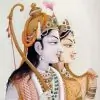What is found here may be found elsewhere. What is not here is nowhere...' Thus begins the epic poem Mahabharat' (also spelt Mahabharata') which was penned c. 3000 BC by Ved Vyas. Legend has it that Ved Vyas set the story in the ancient time of the Vedas so that humans could learn about the ideal path of life. So, if one has read and understood the Mahabharat', they don't need to read the Vedas. Over the millennia, different scholars interpreted the epic saga differently. As a result, there exist different versions of the epic which have been made into both television series and films. But Mahabharat' is more than a repository of morals intended for the elderly and religious, and this is what marked the genesis of Star Plus' rendition of the great epic where Lord Krishna himself appears to provide life instructions to the young viewers. TelevisionPost.com takes a look at how the epic saga unfolds for the new generation. It all started four years back, in 2009, when Star India joined forces with Siddharth Kumar Tewary's Swastik Productions. After initial apprehensions, the story took its course and work commenced. Though the show was expected to go on air in nine months, it took four long years before it could be ready for viewers. It finally started airing in 2013.
 Recounts the show's producer Siddharth Kumar Tewary, "From the day we started working, I thought it would take six to nine months. But we soon realised that this is not a remake. Mahabharat' is an epic poem that needs to be retold and reinterpreted. It took a lot of time for me to understand how to approach it and interpret it for today's generation. Krishna says you can never control the outcome and that is what propelled our thought." About four hours away from Mumbai, in the small seaside town of Umbergaon is located Vrindavan Studio. Named rightly after the place where Krishna is believed to have spent his childhood days, Vrindavan Studio has been the abode of the Kauravas and Pandavas for well over five months now. With its intricate design and imposing structure, the set is something to amaze at. Small wonder, it took the team more than a year to erect the grand set.
Recounts the show's producer Siddharth Kumar Tewary, "From the day we started working, I thought it would take six to nine months. But we soon realised that this is not a remake. Mahabharat' is an epic poem that needs to be retold and reinterpreted. It took a lot of time for me to understand how to approach it and interpret it for today's generation. Krishna says you can never control the outcome and that is what propelled our thought." About four hours away from Mumbai, in the small seaside town of Umbergaon is located Vrindavan Studio. Named rightly after the place where Krishna is believed to have spent his childhood days, Vrindavan Studio has been the abode of the Kauravas and Pandavas for well over five months now. With its intricate design and imposing structure, the set is something to amaze at. Small wonder, it took the team more than a year to erect the grand set.  Housing seven shooting floors, an exterior floor and a crew of almost 400 people, the sprawling 10-acre studio looks like a small city that immediately takes one back to Hastinapur. Digging out all the mythology, I walk around gaping in awe at the scale of the show.
Housing seven shooting floors, an exterior floor and a crew of almost 400 people, the sprawling 10-acre studio looks like a small city that immediately takes one back to Hastinapur. Digging out all the mythology, I walk around gaping in awe at the scale of the show.  From the set to costumes, ornaments, armour, jewellery to make-up"each aspect has been meticulously designed and individually customised. Constructed of plaster of Paris, fibre and cement, the seven sets feature complex designs with intricate detailing. All this is explained to me by the creative director Amol Surve who acts as my guide taking me on a tour of the sets. The first set houses the darbar (grand court) where Yudishtir's rajya abhishek (royal initiation) was shot. A huge room with 10 thrones and around 400 crew members, it is the main set of the show. The second set is where the swayamvar (the ceremony where a girl chooses her husband from a posse of suitors) was held. It has now been reconstructed to serve as Indraprastha. The third set is Dhritarashtra's bedroom. The bed is specially designed with an elephant head which is emblematic of Hastinapur. Behind the bed is a chroma wall on which the VFX folks display a window view of Hastinapur. The fourth set is a cave used for different scenes and purposes such as Hidimba's lair and the 100 embryos of the Kaurava brothers hanging from branches. Since it was not possible to hang 100 embryos, they used only 20 and created the rest through VFX. The multi-purpose fifth set is where Shakuni plays chausar (the game of dice). It also serves as the kitchen and Draupadi's hamam (bath). The sixth set is the chroma floor covered with huge green curtains. This is where all VFX shots are canned including Shakuni's introduction and an actor standing on a hill. The seventh set is Vrindavan from where Krishna doles out learning and which is also used to show the forest.
From the set to costumes, ornaments, armour, jewellery to make-up"each aspect has been meticulously designed and individually customised. Constructed of plaster of Paris, fibre and cement, the seven sets feature complex designs with intricate detailing. All this is explained to me by the creative director Amol Surve who acts as my guide taking me on a tour of the sets. The first set houses the darbar (grand court) where Yudishtir's rajya abhishek (royal initiation) was shot. A huge room with 10 thrones and around 400 crew members, it is the main set of the show. The second set is where the swayamvar (the ceremony where a girl chooses her husband from a posse of suitors) was held. It has now been reconstructed to serve as Indraprastha. The third set is Dhritarashtra's bedroom. The bed is specially designed with an elephant head which is emblematic of Hastinapur. Behind the bed is a chroma wall on which the VFX folks display a window view of Hastinapur. The fourth set is a cave used for different scenes and purposes such as Hidimba's lair and the 100 embryos of the Kaurava brothers hanging from branches. Since it was not possible to hang 100 embryos, they used only 20 and created the rest through VFX. The multi-purpose fifth set is where Shakuni plays chausar (the game of dice). It also serves as the kitchen and Draupadi's hamam (bath). The sixth set is the chroma floor covered with huge green curtains. This is where all VFX shots are canned including Shakuni's introduction and an actor standing on a hill. The seventh set is Vrindavan from where Krishna doles out learning and which is also used to show the forest. One large area of the studio encompasses the exterior floor that shows the entrance to Hastinapur through big gates and the city marketplace. A small creative room ensconced between the sets displays sketches of items the team is creating and clay moulds of the same. Set designer Amit Singh here reveals that when the main faade was built in 2009, they had no idea the show would take on such grandeur. Following discussions with Star, they reworked the sets to give everything a touch of quaint opulence. I am snapped out of my amazement seeing a suave Draupadi walking past. I learn that her theme jewellery is lotus as the story says that the wife of the Pandavas emanated the fragrance of the blue lotus. The colour associated with her is red and the jewellery has been sourced from Kolkata, Madhya Pradesh and some places in South India.
One large area of the studio encompasses the exterior floor that shows the entrance to Hastinapur through big gates and the city marketplace. A small creative room ensconced between the sets displays sketches of items the team is creating and clay moulds of the same. Set designer Amit Singh here reveals that when the main faade was built in 2009, they had no idea the show would take on such grandeur. Following discussions with Star, they reworked the sets to give everything a touch of quaint opulence. I am snapped out of my amazement seeing a suave Draupadi walking past. I learn that her theme jewellery is lotus as the story says that the wife of the Pandavas emanated the fragrance of the blue lotus. The colour associated with her is red and the jewellery has been sourced from Kolkata, Madhya Pradesh and some places in South India.  As we come across the Pandavas, the importance of casting is what comes to the fore with Shaheer Shaikh's chiselled looks (Arjun), Saurabh Singh Gujjar's large stature (Bheem), Rohit Bharadwaj's maturity (Yudhisthir), Vin Rana's impish look (Nakul) and Lavanya Bharadwaj's sharpness (Sahadev). Tewary says that casting was a big task and the training sessions following it posed an even bigger challenge. "I wanted people who would be dedicated to the show. We did auditions in around 10-15 cities and casting was done over a period of three years. I met each actor to see if they would be comfortable playing a warrior in those costumes. Most of my actors sat at home for over a year to work their characters. We also had a lot of workshops where we discussed the characters. We roped in Rajit Kapoor as the diction expert. Then there were trainers of walking, sword fighting, horse riding, etc.," he says. Pooja Sharma, who is essaying Draupadi, states, "The language we speak is a Sanskritised form of Hindi. We keep getting told about our posture and how to walk." Shaikh further highlights the eight-month training sessions for horse riding, sword fighting and weaponry. "There was a lot of pressure. We had trainers and practised hard. Even in the group reading sessions, we got different points of view. We understood the writer's vision when we read the script which helped us portray the characters," he says. As the production team delved deeper into the material, they figured that understanding each individual character in Mahabharat' is important because when two people fight, each is right from their point of view. "This is not just a story of good winning over evil. So, we thought why not give a message at the end of each story to help viewers understand how it is relevant in today's world? It's thus that we came up with the idea of having Lord Krishna tell viewers the moral of each episode," explains Tewary. Quite appropriately, the producers also sought the advice of Prof. Madhavi of the University of Mumbai who did her PhD in Mahabharat'. She provided the writers with six versions of the story. The writing team comprising Radhika Anand, Sharmin Joseph, Mihir Bhuta and Anand Vardhan would have endless debates on the narrative. A lot of time was also dedicated to deciding on the kind of music that should be used, whether it should be devotional or historically inclined. The actors had around 30 look tests before approaching Bhanu Athaiya who helped them get the perfect look. Each item of jewellery has been custom-made and so have the armour, footwear and other paraphernalia appropriate to the spirit of the epic. A case in point: According to legends, Arjun's bow Gandiva was made of bones, so a sketch was made which was then followed by a sample to see if the actor could carry its weight. Being a daily show, the schedules too are gruellingly long which I realise while waiting for Tewary to continue narrating his version of the epic. The director, meanwhile, is busy having discussions with his team on an upcoming episode involving heavy VFX.
As we come across the Pandavas, the importance of casting is what comes to the fore with Shaheer Shaikh's chiselled looks (Arjun), Saurabh Singh Gujjar's large stature (Bheem), Rohit Bharadwaj's maturity (Yudhisthir), Vin Rana's impish look (Nakul) and Lavanya Bharadwaj's sharpness (Sahadev). Tewary says that casting was a big task and the training sessions following it posed an even bigger challenge. "I wanted people who would be dedicated to the show. We did auditions in around 10-15 cities and casting was done over a period of three years. I met each actor to see if they would be comfortable playing a warrior in those costumes. Most of my actors sat at home for over a year to work their characters. We also had a lot of workshops where we discussed the characters. We roped in Rajit Kapoor as the diction expert. Then there were trainers of walking, sword fighting, horse riding, etc.," he says. Pooja Sharma, who is essaying Draupadi, states, "The language we speak is a Sanskritised form of Hindi. We keep getting told about our posture and how to walk." Shaikh further highlights the eight-month training sessions for horse riding, sword fighting and weaponry. "There was a lot of pressure. We had trainers and practised hard. Even in the group reading sessions, we got different points of view. We understood the writer's vision when we read the script which helped us portray the characters," he says. As the production team delved deeper into the material, they figured that understanding each individual character in Mahabharat' is important because when two people fight, each is right from their point of view. "This is not just a story of good winning over evil. So, we thought why not give a message at the end of each story to help viewers understand how it is relevant in today's world? It's thus that we came up with the idea of having Lord Krishna tell viewers the moral of each episode," explains Tewary. Quite appropriately, the producers also sought the advice of Prof. Madhavi of the University of Mumbai who did her PhD in Mahabharat'. She provided the writers with six versions of the story. The writing team comprising Radhika Anand, Sharmin Joseph, Mihir Bhuta and Anand Vardhan would have endless debates on the narrative. A lot of time was also dedicated to deciding on the kind of music that should be used, whether it should be devotional or historically inclined. The actors had around 30 look tests before approaching Bhanu Athaiya who helped them get the perfect look. Each item of jewellery has been custom-made and so have the armour, footwear and other paraphernalia appropriate to the spirit of the epic. A case in point: According to legends, Arjun's bow Gandiva was made of bones, so a sketch was made which was then followed by a sample to see if the actor could carry its weight. Being a daily show, the schedules too are gruellingly long which I realise while waiting for Tewary to continue narrating his version of the epic. The director, meanwhile, is busy having discussions with his team on an upcoming episode involving heavy VFX.  He then goes on to explain a particular sequence the team shot in Kashmir where the location was one kilometre down in the valley. The entire crew had to climb down and shoot while it was raining. Though they had a rope to climb up, some of the crew members slipped and sustained minor injuries. Pre-planning plays a major role in the making of this show. The team prepares storyboards of each sequence and the shooting is done keeping in mind the design. When the show started, the team was one month ahead of telecast. However, with the bank of episodes having caught up with them, they now shoot as many as 10 episodes a month, while the demand is for 22.
He then goes on to explain a particular sequence the team shot in Kashmir where the location was one kilometre down in the valley. The entire crew had to climb down and shoot while it was raining. Though they had a rope to climb up, some of the crew members slipped and sustained minor injuries. Pre-planning plays a major role in the making of this show. The team prepares storyboards of each sequence and the shooting is done keeping in mind the design. When the show started, the team was one month ahead of telecast. However, with the bank of episodes having caught up with them, they now shoot as many as 10 episodes a month, while the demand is for 22.  Star Plus programming head for fiction Danish Khan states, "The show was very challenging as it is a story that has been told and yet untold. How we should present it was a big challenge. Our attempt was to look into the past to tell the present generation how to shape their future. It's an entertaining story with a great moral framework so balancing entertainment with instruction was a great challenge. We wanted the production value to be grand. It is for the first time that Mahabharat' is being told in a daily format. Hence, launching the show with enough footage and episodes was another challenge." With the channel and production house initially planning for a total of 128 episodes, they realised a lot more things could be told to the viewers. The episodes, thus, have now been augmented by about 100 more while the shooting has been extended till June this year. But that doesn't seem to deter the actors who, after having spent around five months away from the din and bustle of the city and mobile networks, have come to form a bond of friendship with each other, a fact that is reflected on the screen as well. Shaheer Shaikh and Vin Rana talk about this camaraderie through various anecdotes. While the boys now go to the movies or gym together, they also indulge in a lot of fun which can be seen in the lively scenes between Nakul and Bheem. Recently, they even took their beds out one night and slept under the sky as they found it beautiful. As it is time for me to finally take leave of the studio, I take one last glance at the mammoth set and see Arjun all decked up in armour at Yudhisthir's royal induction by Dhritarashtra amid loud drum rolls and strewn flower petals. I feel enlightened as I walk out of the mythological and into the mundane, recalling the sequence when Krishna read out the Bhagavad Gita on the battlefield of Kurukshetra. Whatever happened, happened for good... Whatever is happening, is happening for good... Whatever will happen, will be for good... Whatever is yours today was somebody else's yesterday and will be somebody else's tomorrow...
Star Plus programming head for fiction Danish Khan states, "The show was very challenging as it is a story that has been told and yet untold. How we should present it was a big challenge. Our attempt was to look into the past to tell the present generation how to shape their future. It's an entertaining story with a great moral framework so balancing entertainment with instruction was a great challenge. We wanted the production value to be grand. It is for the first time that Mahabharat' is being told in a daily format. Hence, launching the show with enough footage and episodes was another challenge." With the channel and production house initially planning for a total of 128 episodes, they realised a lot more things could be told to the viewers. The episodes, thus, have now been augmented by about 100 more while the shooting has been extended till June this year. But that doesn't seem to deter the actors who, after having spent around five months away from the din and bustle of the city and mobile networks, have come to form a bond of friendship with each other, a fact that is reflected on the screen as well. Shaheer Shaikh and Vin Rana talk about this camaraderie through various anecdotes. While the boys now go to the movies or gym together, they also indulge in a lot of fun which can be seen in the lively scenes between Nakul and Bheem. Recently, they even took their beds out one night and slept under the sky as they found it beautiful. As it is time for me to finally take leave of the studio, I take one last glance at the mammoth set and see Arjun all decked up in armour at Yudhisthir's royal induction by Dhritarashtra amid loud drum rolls and strewn flower petals. I feel enlightened as I walk out of the mythological and into the mundane, recalling the sequence when Krishna read out the Bhagavad Gita on the battlefield of Kurukshetra. Whatever happened, happened for good... Whatever is happening, is happening for good... Whatever will happen, will be for good... Whatever is yours today was somebody else's yesterday and will be somebody else's tomorrow... 































